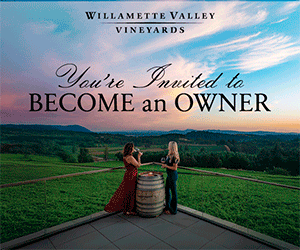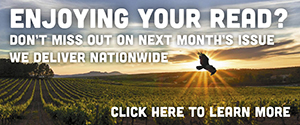Say What?
How do AVAs help or hurt in the selling (or promotion) of Oregon wine?
“From a sales perspective, AVAs are the most singular thing our wine region has. Not only do the AVAs help communicate the subtle differences within Oregon, they are the one thing that cannot be mimicked by another growing area. Clones, cellar technique, farming technique, can all be copied by anyone else. Star winemaker? How long until she moves on or dies? — I’m not morbid, it’s an industry that needs to look long term. A new amazing clone? In 10 years, it will be planted widely. Concrete egg? In cellars everywhere in three years. Whistling Ridge Ribbon Ridge Chardonnay? A 1.0-acre block producing a world-class Chardonnay found nowhere else in the world.”
Marcus Goodfellow, Goodfellow Family Cellars
“Multiple AVAs are a proven model used by all the great wine regions of the world to differentiate their wine, Burgundy, Bordeaux, Napa, Sonoma (to name a few), all of these regions have several sub-AVAs. Oregon or even the Willamette Valley is a large area with diverse microclimates and soil types. We are lucky to have AVAs with such distinct flavor profiles, like the Dundee Hills, Yamhill-Carlton, etc. It may take a few years, but eventually, the consumers (and salespeople) will be educated about the different AVAs, and it will help people choose their preferred wine style. AVAs definitely help sell wine that has a sense of place.”
Sanjeev Lahoti, Saffron Fields Vineyard
“Ultimately, I see AVAs as an opportunity to talk to consumers about meaningful distinctions in our wines. No, people aren’t familiar with all the names, but that’s true of every region. People didn’t know the Willamette Valley 50 years ago. They do know and we have a chance to move further into the conversation about the region, so I’m all for AVAs.”
Vincent Fritzsche, Vincent Wine Company
“Oregon’s AVAs definitely help sell wine, but, more importantly, they help educate the trade and consumer. They allow wineries and consumers to attribute a given quality, reputation and prestige of a wine made from grapes grown in a particular and well-defined area — well-defined in terms of history, micro-climate, soil types, topography, rainfall, etc. In my own tasting room, I am constantly being asked about vineyard specifics, soil and climate, especially. Willamette Valley is Oregon’s most famous AVA. It makes sense for us in the sub-AVAs — Ribbon Ridge, in this case — to ride the coat tails of that reputation and, in turn, the sub-AVAs can be important in telling the Willamette Valley and Oregon wine story to consumers and the trade in an educational sense, not just for marketing. To be sure, wineries benefit from AVAs, but at the end of the day, it is consumers who benefit the most as they become more educated on the diversity of Oregon wines...”
Daniel Warnshuis, Utopia Wines
“I would compare it to Burgundy in this way: Would you rather have your wine come from, say, the Côte-d’Or or Gevrey Chambertin/Volnay? From Willamette Valley or Dundee Hills? It’s not exactly the same, but wine is all about where it’s grown; and it can only help knowing the AVA.”
Sandy Thompson, Mt. Tabor Fine Wines












